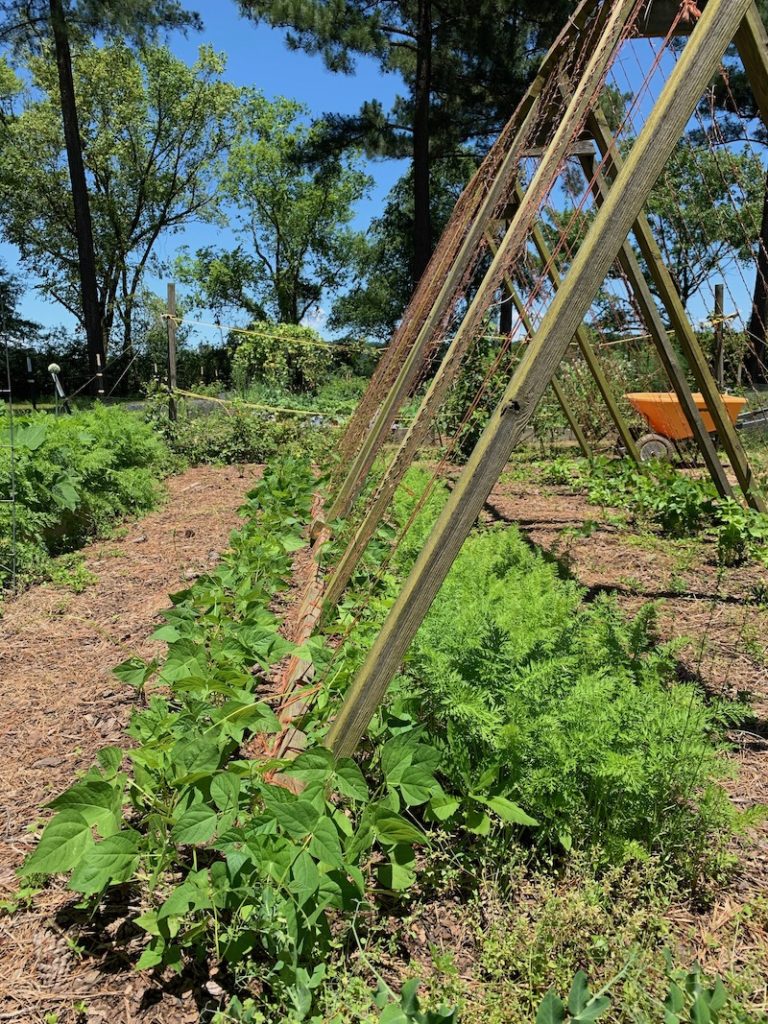Companion Planting Disasters
If you’ve ever explored the world of companion planting, then you’re no stranger to the overwhelming information available to us at the click of a button or the turn of a page.
Frustration accompanies overwhelm for both beginning gardeners and non-beginners alike. How are we to know what comes from experience, good science, or frankly, just plain good luck? And how do we know which companions are bad combinations?
In the Beginner’s Garden Podcast, I talked about some of the companion planting disasters that I’ve personally experienced in my own garden.
Unlike the simplistic lists of “good companions vs bad companions,” I want to share with you why I believe certain combinations didn’t work for me. In most cases, just one small tweak could have made the difference. You’ll notice some common themes that will help you not only prepare for what to avoid regarding these specific combinations but also apply these principles to your entire garden.
Click below to listen or read the full article:
I want to start by saying that I’m not going to tell you what not to plant together because I do think in certain climates and gardens, some combinations work better than in other gardens. So please keep your climate in mind as you read my personal experiences in my southern US garden in zone 7b.
Companion Planting Principle: Shade Matters
My first few disasters included a poor use of vertical crops or trellises that inhibited growth of shorter plants due to the shade cast on them. Here are the examples as well as how we could tweak these otherwise good companions and make it work.
Watermelon and Okra
Last year I planted watermelon beneath my okra like I have done multiple times before, but this time I didn’t end up with a watermelon harvest at all. The okra thrived, as you can see below — with the most full plants I’ve ever grown (thanks to an extra layer of compost I realized made a huge difference!).

Okra goes tall, allowing low-growing crops like melons to spread and wander and find the sun, making this typically a perfect combination.
What happened this year? If you look to the left and to the right of the okra, you see two very tall vertical plantings — my a straw bale garden of very healthy tomato plants on the east side of the melons and corn on the west. Essentially, because the okra sprawled out so much, my melons were completely shaded all hours of the day, leading to spindly plants and zero harvest.
Takeaway: Okra and melons (or squash or other low-growing plants) are usually perfect combinations, but make sure not to add vertical crops on both sides (or either side too close) to this planting, ensuring the melons capture as much sunlight as possible.
Carrots and Pole Beans
Another disaster I had just this last year was planting carrots beneath my A-Frame Trellis where I grow my pole beans. The A-Frame Trellis is a pride and joy in my garden.

I planted carrots under the A-frame, hoping that when the beans started to climb in the early summer, it would cool the soil below, enabling these carrots to have a bit more time to develop before the heat of the summer stunted them.
What I didn’t take into consideration was that even though carrots are cool-season crops, they still require sun! So, when the beans took off like they always do, the carrots underneath simply stopped growing.
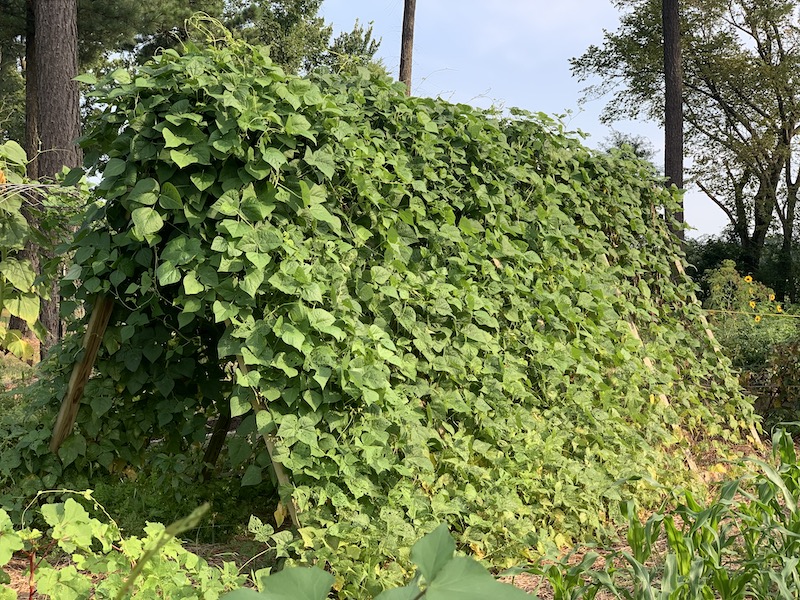
The reason I’m almost certain this was a shade issue is that six feet away, I had the same carrots planted in a raised bed with full sun and had the best harvest of carrots I’ve had thus far.
Still, carrots are an ideal plant to grow beside vertical crops, so what gives? I believe my disaster has to do with my planting under the A-frame trellis, which shaded the carrots both on the east and the west (like the melons above). I believe carrots growing beside a vertical crop where they could get either full sun to the east, west, or south (or a combination), would have thrived.
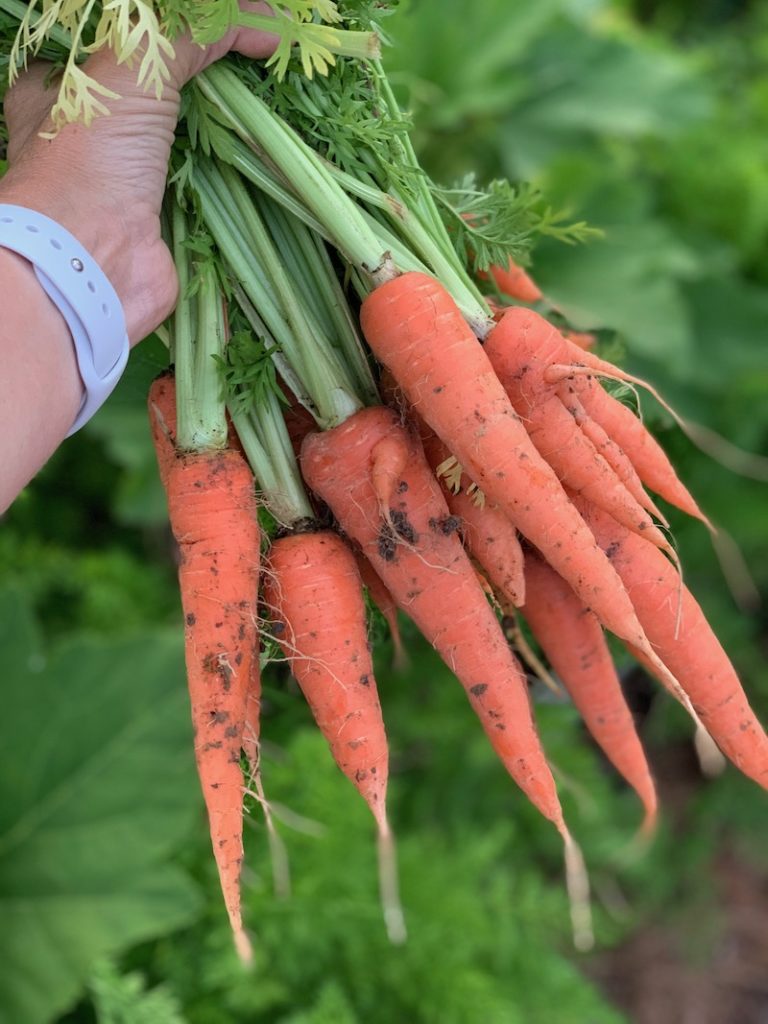
Takeaway: If planting carrots beside a vertical crop, ensure they will receive at least part sun (around 6 hours).
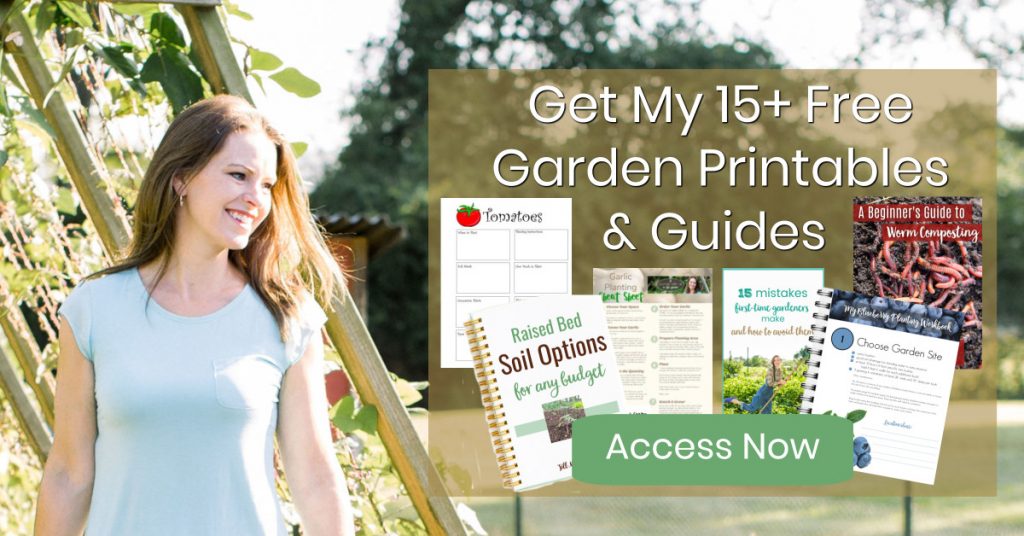
Peppers and Tomatillos
A few years ago, I planted peppers on the south side of my tomatillos. If you aren’t familiar, tomatillos get very tall. When I planted them, I hadn’t considered that the fanning of their leaves would shade the peppers as they did.
After I noticed the lagging growth and lack of flowering from the peppers, I realized the towering tomatillos were too much for the peppers to truly thrive.
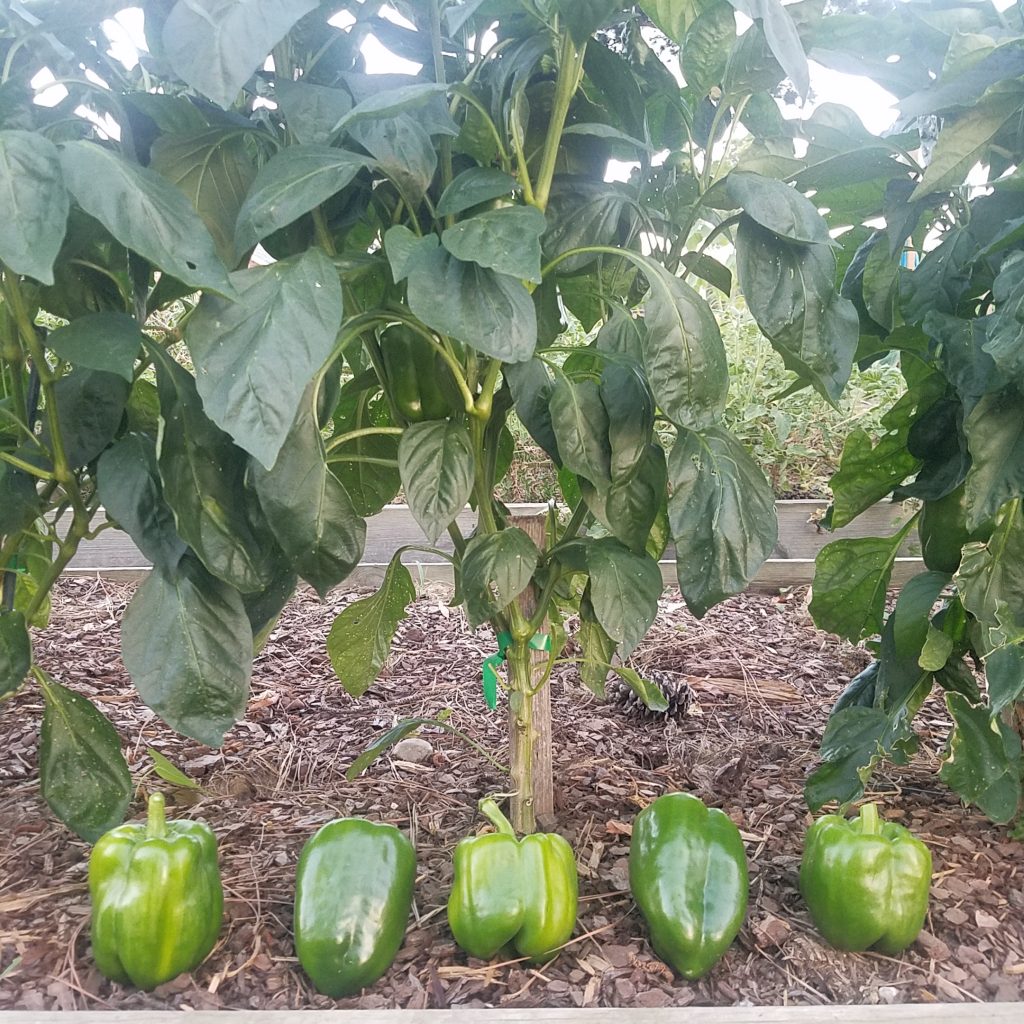
Upon that realization, I had a decision to make. The tomatillos had produced well, so I picked as many of them as I could and I removed the plants entirely. Once I did this, the pepper plants shot up and produced an excellent harvest.
Takeaway: Even though planting a lower-growing plant on the south side of a taller plant is usually a good bet, keep in mind the vertical habit of the plant. In the case of tomatillos, their arching habit shaded the peppers even on their southern side. And in the case of peppers (and other sun-loving plants), partial sun simply isn’t enough for peppers to produce a good harvest.
Companion Planting Principle: Don’t Forget Pollination
For many years when it came to pollinating bees, my thought was, “plant and they will come.” And while this is the case at times, it’s not always a sure bet. I found this out the hard way when I removed a flowering herb when I needed it the most.
This one isn’t so much a problem because of what I planted together, but what I prematurely pulled out. My cinnamon basil and some nearby sage had been flowering for many weeks, already dropping new seed into an area I wanted to clear out for my fall garden.
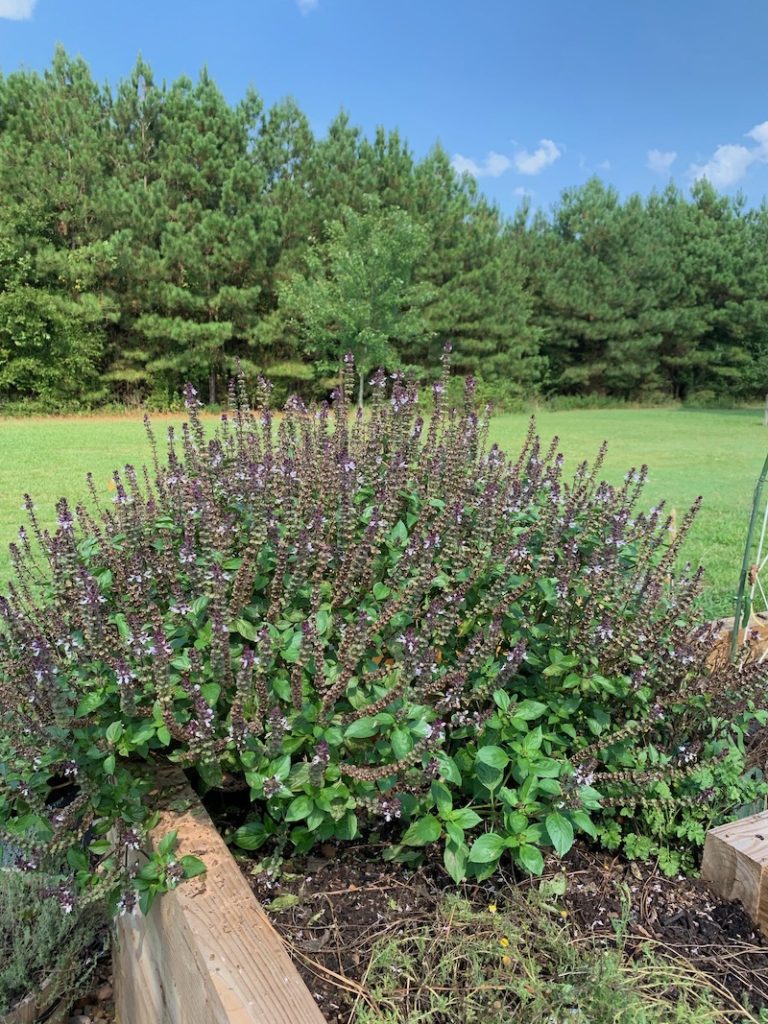
At the same time, I sowed a late planting of cucumbers near the bed where my cinnamon basil and sage had been. But, what I didn’t think about was that when I pulled out those flowering plants, I also forced the pollinators that they had been attracting to go elsewhere. That left me with no pollinators when my cucumbers needing them the most.
My cucumber plants had so many flowers on them, but few fruit formed due to the lack of bees in the area.
Takeaway: Plant flowers — or let herbs flower — strategically, attracting native bees to pollinate your crops like cucumbers and squash.
Companion Planting Principle: Plant Spacing + Growth Habit Matters
I believe most home gardeners with healthy soil can maximize our space by planting crops with different growth needs and habits next to each other. But as I learned the hard way, some combinations don’t work as great because of the environment they create for one another. Here are two examples:
Lavender, Nasturtium, and Calendula
One year I planted nasturium and calendula together — nasturtium in the middle with calendula plants on each side. On their east side, I tucked two lavender plants next to them, hoping for these three beautiful flowers to highlight my raised bed.

My big mistake here was that I didn’t think about how large the calendula and nasturtium would get when I planted the tiny transplants. What was supposed to be a dwarf Nasturtium, turned into a large plant that overtook my garden space very quickly.
Add the large calendula plants to the mix and they suffocated my lavender quickly. Looking back, it just wasn’t an ideal place to plant the lavender in the first place because my soil there was rich and held water well (lavender likes dry, well-draining conditions). But the bigger problem here was that the other two plants created a humid environment below their large leaves that ultimately led to the death of my lavender.
Takeaway: Consider the mature height of a plant as well as a plant’s tolerance of microclimates such as humidity caused by low-growing, large plants beside it.
Sweet Potatoes, Echinacea, and Cosmos
I had a similar experience when I planted sweet potatoes in the same raised bed. I know that sweet potatoes spread and grow like crazy; this wasn’t a new concept to me. However, what I didn’t bank on was that the neighboring echinacea and cosmos wouldn’t stand a chance next to the sweet potatoes.
Both echinacea and cosmos are taller, flowering plants, but the sweet potatoes leaves and vines created a humid, moist microclimate that did not make it a good companion to them. My cosmos died from this environment, but thankfully I harvested the sweet potatoes soon enough to give the echinacea a good stretch of nice fall weather to rebound.
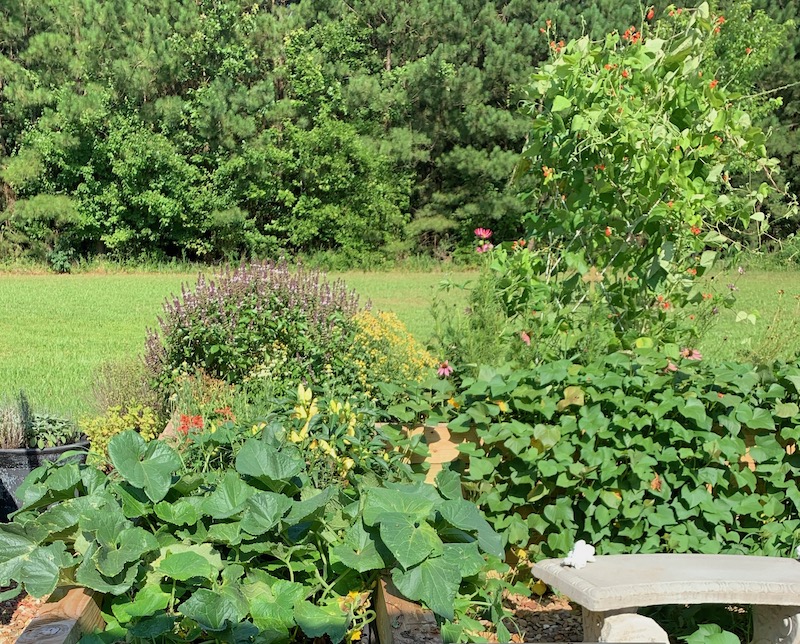
Takeaway: We have to be conscious of how certain plants spread out and vine. Spacing matters, and it’s hard to imagine what a full-grown plant will look like when it’s young. But if we don’t, we can have a spacing disaster that not only looks unkempt (like my photo above) but also can potentially suffocate plants that you want growing well in your garden.
—
What about you? What companion planting disasters have you experienced in your garden?
Do you get overwhelmed with garden planning?

Subscribe here for my best tips to plan your garden in just 7 days -- all for FREE.
Plus, I'll send you my "In the Garden E-mail" on Fridays, periodic updates on garden resources relevant to you, and you'll receive access to my entire bank of free garden downloads!
You are also agreeing to our privacy policy.

